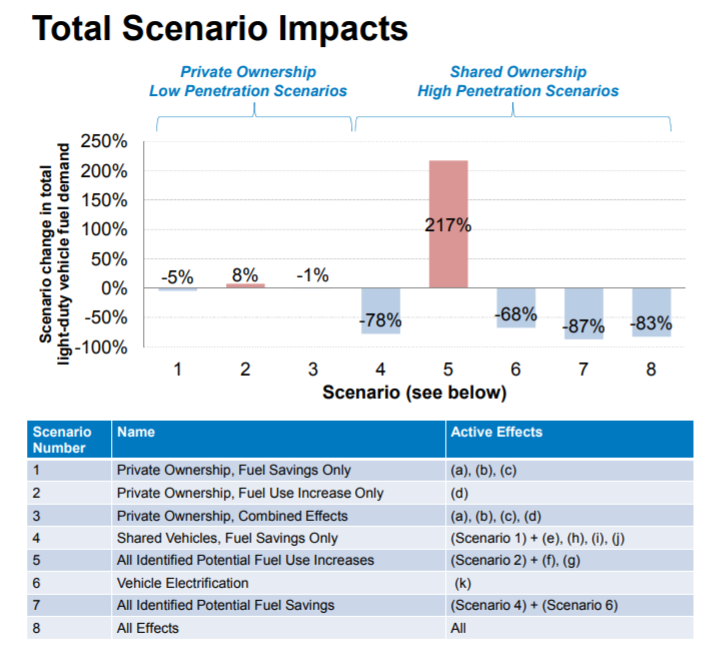Environmental Impacts
The use of self-driving cars could have a number of different implications on the environment and the state of the earth as a whole. These implications will be dependent on the implementation of the new technology, what they will use as an energy source, and all of the uses they may take on.
On one hand, many of the self-driving car models that have been publicized are electric, which are, for the most part, better for the environment due to their lack of emissions. On the other hand, some models of the new autonomous vehicles may not be electric. While these non-electric vehicles may seem as though they would be just as bad for the environment as typical gas-powered cars, they would actually be better for the environment due to automated driving being smoother than that of the average human. When a car is jolted in and out of motion by slamming the gas pedal or brakes, the car becomes less fuel-efficient (Tsui). Thus, the issue with these cars and the environment arises when considering how they affect the number of vehicles on the road and the overall implementation of how they are used.
The National Renewable Energy Laboratory (NREL), a lab funded by the US Department of Energy, has made preliminary determinations that the usage of self-driving cars could reduce fuel usage up to almost 90%, or it could increase the fuel demand by over 200% depending on how they are used throughout the country. These projections are based on two possible scenarios, private or shared ownership. Under private ownership, the NREL expects only a 10% penetration into the market, meaning that only 10% of the population will make use of the vehicles, which for the most part has minimal effect on pollution levels. Shared ownership is where the largest environmental effects can be seen, with pollution changes ranging from an 87% decrease to a 217% increase. The NREL has identified the largest factors contributing to the increase in pollution to be travel by populations that currently do not have the ability to drive, increased travel, and longer travel distance. The factors that are predicted to decrease pollution are lighter vehicles due to less need for crash protection and the electrification of vehicles (Brown).

Image from https://www.nrel.gov/docs/fy13osti/59210.pdf.
With this preliminary look at the effects of autonomous vehicles on the environment, it is important that the new vehicles are implemented in the greenest manner possible to maximize the benefits of autonomous vehicles while minimizing the pollution they produce. Donna Haraway, a professor at the University of California, Santa Cruz, believes that the best way to solve any problem is to not focus on the future or the past but instead to work through the current issue at hand, or "stay with the trouble" (Haraway). This is one opportunity to do that. Carbon emissions and global warming are present issues that need to be addressed, and by implementing a green source of transportation, carbon emissions can be reduced by almost 90%. By ensuring that autonomous vehicles are implemented in the safest possible manner for the planet, humans are able to ensure a healthier planet while still implementing a technology that will improve the quality of life for many.